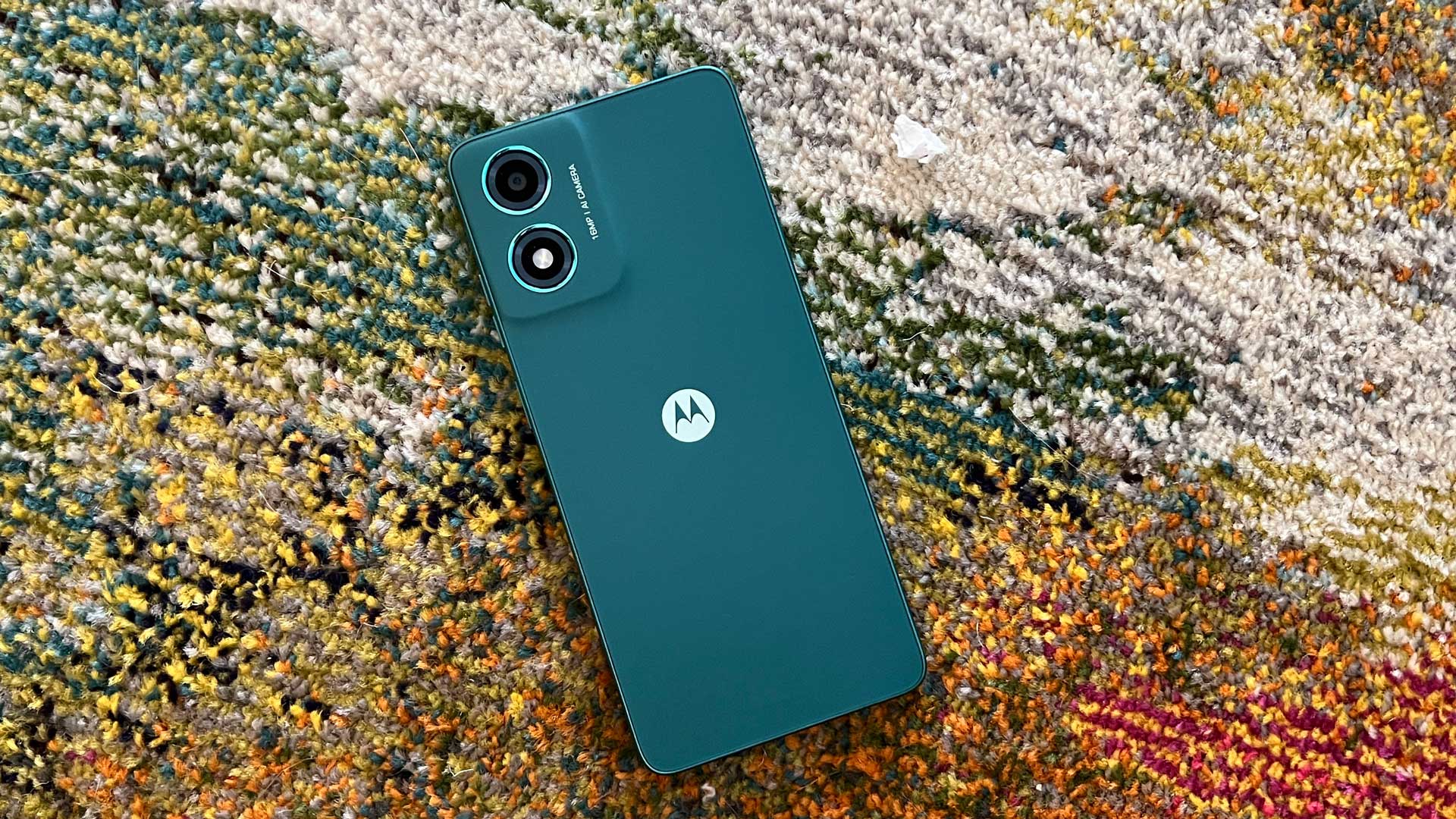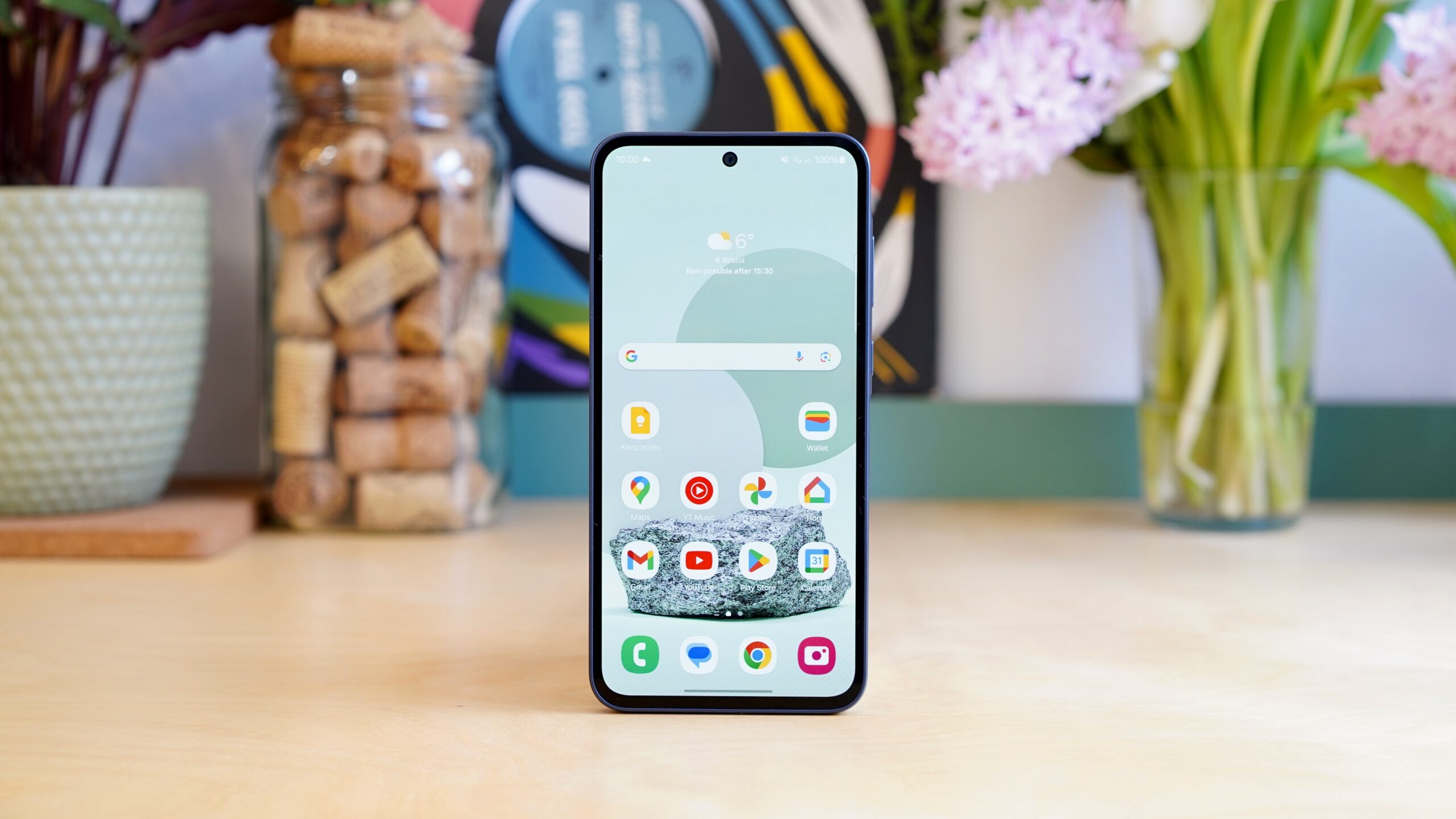Sony Xperia 10 IV Review
Good battery life overshadowed by the flaky camera
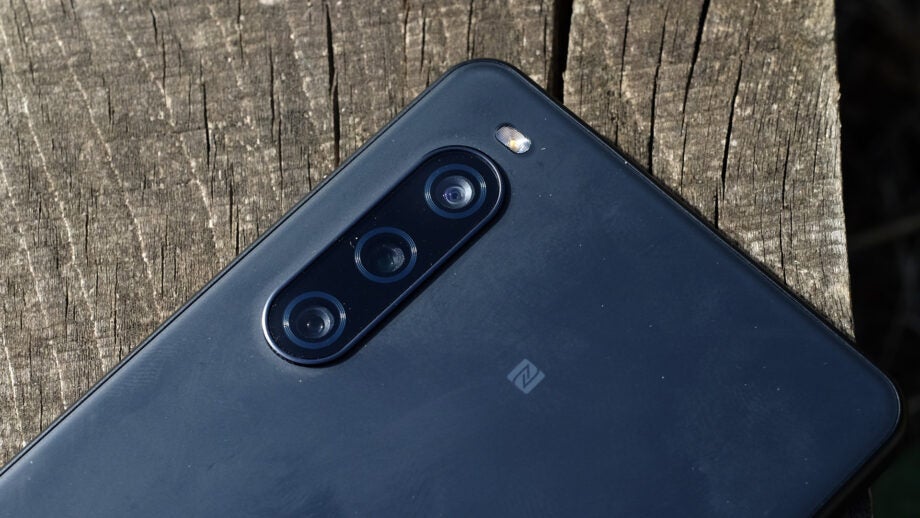
Verdict
The Sony Xperia 10 IV’s class-leading battery life and unusually rugged chops are great, but they end up overshadowed by the flaky camera software, the relatively weak processor and — a big deal to some — the 60Hz screen.
Pros
- Excellent battery life
- IP68 water resistance
- Tough Gorilla Glass Victus display protection
Cons
- Inconsistent cameras
- Slow charging
- Relatively weak processor
- Just 60Hz screen refresh rate
Availability
- UKRRP: £429.99
- USAunavailable
- EuropeRRP: €499
- Canadaunavailable
- Australiaunavailable
Key Features
- IP65/68 water resistanceThis Xperia 10 IV has IP65/68 water and dust resistance, meaning it can handle submersion in water and water jets.
- Gorilla Glass VictusThe Xperia 10 IV screen glass uses Corning’s top-spec Gorilla Glass Victus formulation, making it more scratch resistant than that of the competition.
- 2x camera zoomThis is one of the few mid-range cameras with a dedicated 2x zoom camera. While not ultra-powerful, it’s noticeably better than digital zoom modes.
Introduction
The Sony Xperia 10 IV is a winning phone on three fronts. It is petite. It is tougher than most phones at its level and battery life is excellent.
It’s a super-low-maintenance phone ideal for people who don’t actually do too much advanced stuff with their mobiles. If you find yourself complaining phones are too big and don’t last long enough, the Sony Xperia 10 IV may be the right Android for you. And while this review will bring up a bunch of weak areas in the phone, it does offer something genuinely different.
However, the Sony Xperia 10 IV doesn’t fare that well on the tech side. The Pixel 6a offers far better photos and the results here are strangely inconsistent — although it’s great to have a “real” 2x zoom.
The Sony Xperia 10 IV processor is relatively weak, and if you have already experienced a 90Hz or 120Hz display, this phone’s 60Hz screen may appear a bit jerky. It doesn’t bother me that much, but it’s hard to ignore that other phones that are better value for money.
Still, if you find a deal that matches your budget and like the idea of a low-fuss, long-lasting Android, the Sony Xperia 10 IV Is a sound enough bet.
Design and Screen
- Excellent Gorilla Glass Victus display protection
- Great IP65/68 water resistance
- Fairly weak mono speaker
The Sony Xperia 10 IV looks a lot like the Xperia 10 III and, stepping back to the wider range, much like Sony’s far more expensive phones.
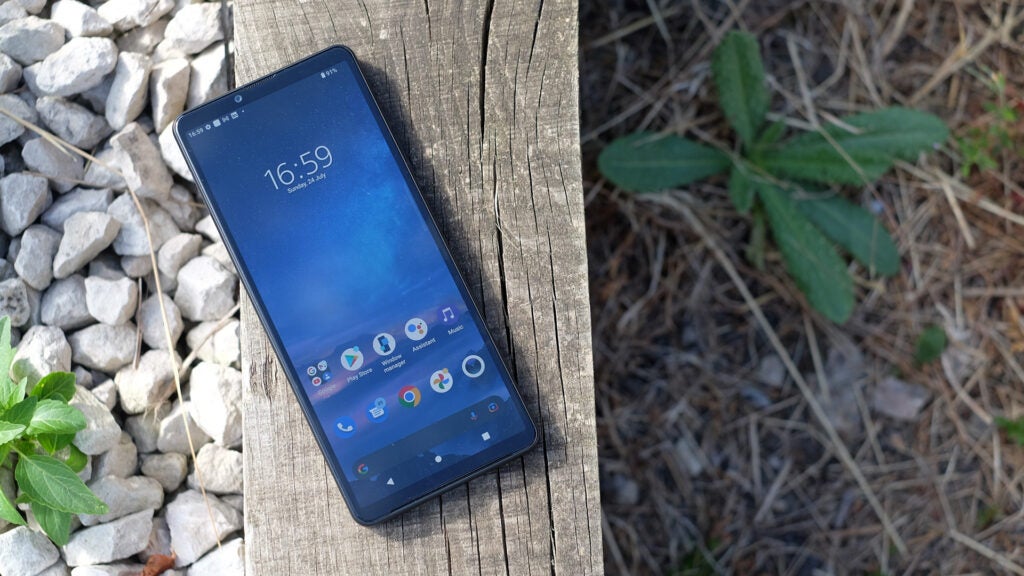
Sony uses the same design language across almost its entire family. It’s a slim brick, with no curvature to the back or front panels bar a little rounding off of the last millimetre or so.
I have the black Sony Xperia 10 IV, and Androids do not come more plain and matter-of-fact than this. If you want a more attention-grabbing handset, Sony makes the Xperia 10 IV in Mint (green), Lavender (purple) and white too.
In most respects the hardware design is ordinary. The back and sides are plastic, but look a little deeper and actually get hold of the Sony Xperia 10 IV, and you’ll notice some special traits.
This phone uses ultra-tough Gorilla Glass Victus for its display glass, the kind seen in flagship phones. Google’s Pixel 6a uses Gorilla Glass 3. Victus tech is a full seven years newer, and comes with better drop and scratch-resistance claims.
Will an afternoon in a sandy pocket scratch it? Sure, but the Sony Xperia 10 IV is a lot tougher than it looks.
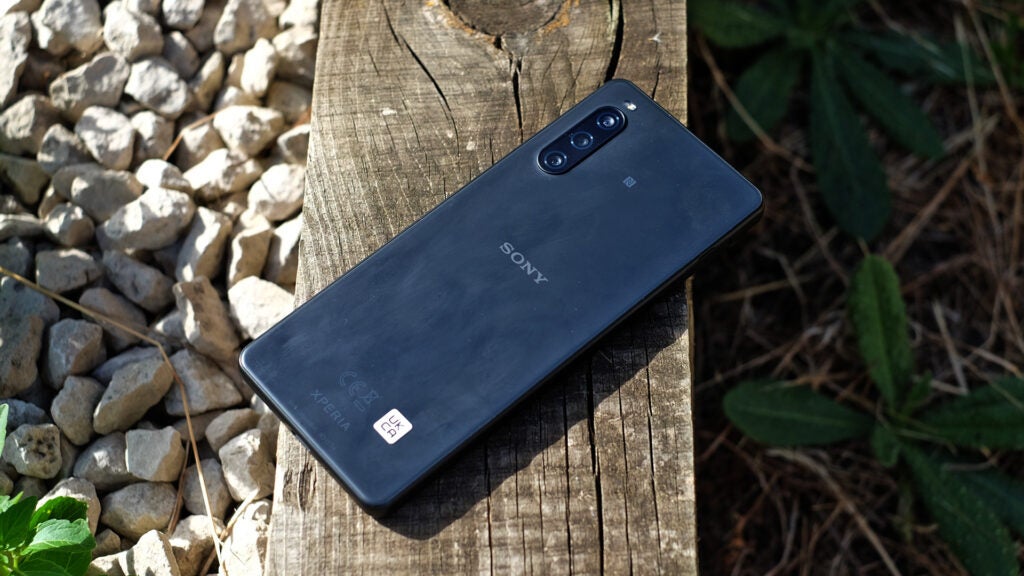
The Sony Xperia 10 IV also has excellent water and dust resistance, specced to meet IP68 and IP65 standards. This means it can take submersion in water at a depth of up to 1.5m, and low pressure water jets.
Once again, these are high-end phone standards in a mid-range handset. You’d never guess the Sony Xperia 10 IV was this hardy either, as it is unusually small and light. It weighs 161g according to my scales and is 67mm wide. The Realme GT Neo 3T I used beforehand was 20% heavier, around 15% wider.
While I am not a massive fan of the Sony Xperia 10 IV’s brick-like shape, these trim stats make the phone relatively easy to handle.
The phone also has a microSD slot, and a great side-mounted fingerprint scanner that makes unlocking the phone securely feel as quick as simply pressing the power button — because the scanner is part of the power button.
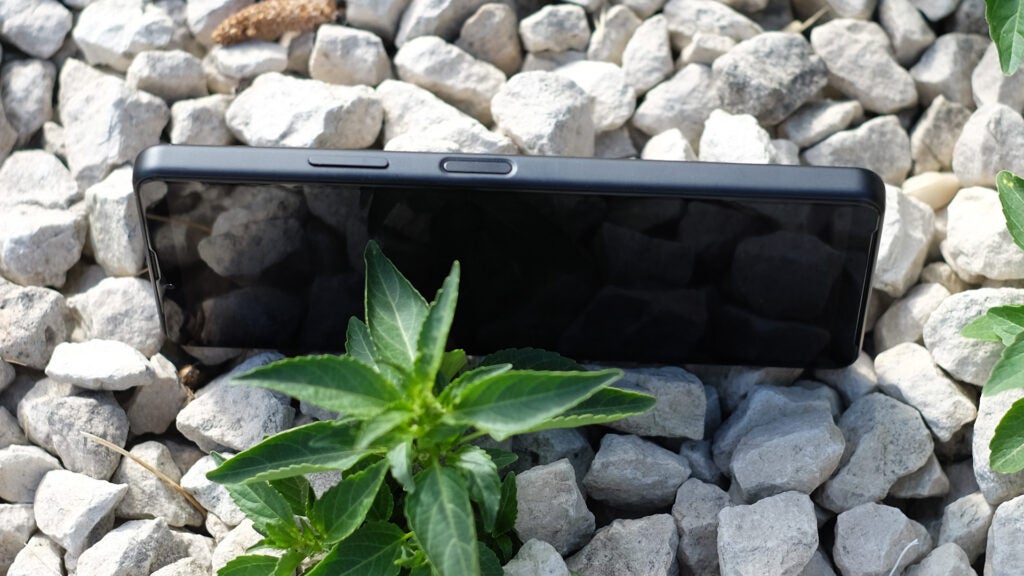
Now let’s cover the bad bits. The Sony Xperia 10 IV’s back cover gets smudged with fingerprint grease quickly, and it takes more than a quick wipe to clean off those marks. You also get very little in the box. There’s no case, no power adapter, and these are the kind of accessories included as standard with most phones from Motorola, Realme, OnePlus and so on.
The Sony Xperia 10 IV’s speaker is quite weak too. There is just one speaker driver on the bottom, it’s not notably loud and the tone is relatively thin. In a phone this petite it is no surprise the speaker takes a hit. However, I listen to a lot of streamed audio through phone speakers and most phones in the £250-400 range do the job better than this Sony.
The Sony Xperia 10 IV’s display is fine, but will catch from flak from the techy crowd. This is an extra-tall 21:9 aspect 6-inch OLED panel with a refresh rate of 60Hz.
That last part, refresh rate, is the contentious spec. Most phones in this class have either 90Hz or 120Hz displays, and they make scrolling appear a lot smoother.
I notice this most when flicking around web pages in the Chrome browser. 60Hz does not provide the sort of uncanny smoothness a 120Hz phone can — when it’s not juddering for reasons other than refresh rate anyway.
However, a slower refresh rate also contributes to the Sony Xperia 10 IV’s key selling point, long battery life. I find this phone easily outlasts the OnePlus Nord 2T, for example, and you simply would not see this sort of longevity if the Xperia had a 120Hz panel.
There is a good argument the Sony Xperia 10 IV should have had 90Hz, though. 90Hz phones can offer exceptional battery life. But people would still have complained it wasn’t 120Hz anyway, so there was no winning for Sony here.
Other parts of the display are solid. It’s an OLED so the contrast is great, but direct sunlight does make the panel itself appear slightly blue or grey — more so than the best phones in this class. This typically happens when layers in the display architecture reflect a small amount of light, appearing to raise the black floor.
The Sony Xperia 10 IV offers two colour modes, Original and Standard. Original appears to be roughly in-line with the sRGB standard, so may appear a bit “low energy” to some, while Standard is more like DCI P3, a richer style most phones aim for these days. The peak brightness of 610 nits is OK, but nothing special.
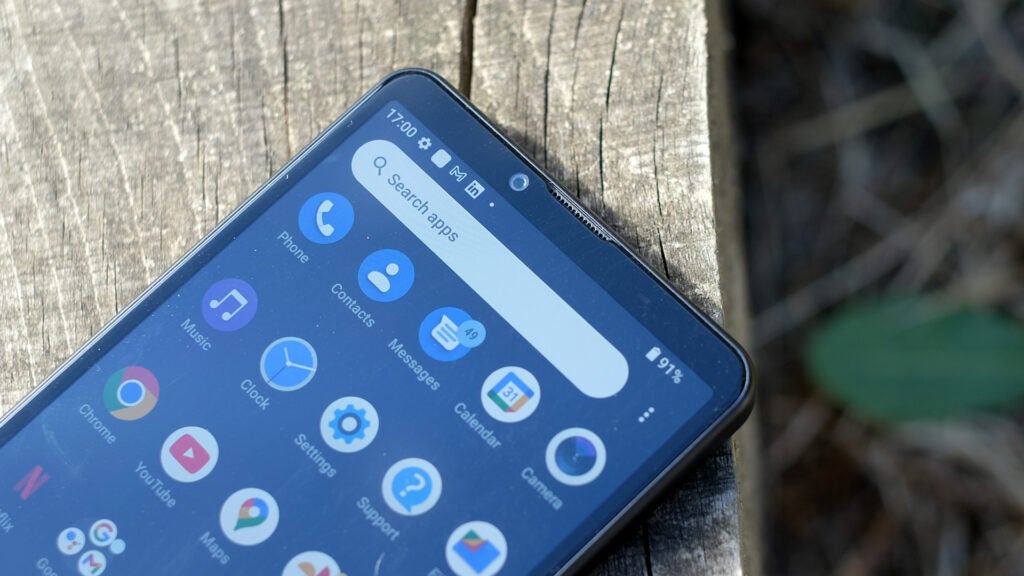
Some of you may want to tweak how the screen represents Android, though. An awful lot of content is crammed into each page, making fonts and app icons appear pretty small.
A slider in the display menu lets you scale up theses fonts and icons. The Sony Xperia 10 IV looks a bit less sophisticated and grown-up when you do so, but it’s a must if your near-field vision is not so hot anymore.
Performance
- Snapdragon 695 causes slight performance drawbacks
- Not the best option, by far, for gaming
- Inoffensive software
The Sony Xperia 10 IV runs Android 12 and has a Sony UI up top. Funnily enough, it had fewer unwanted apps preinstalled than the Sony Xperia 1 IV I received — just Facebook and LinkedIn.
App folders are Sony’s major addition to the Android interface blueprint. You can create separate folders in the app drawer for, say, games and social media apps. With a bit of organisation you can easily make an app library fit into a single screen.
It’s a no-nonsense interface largely free of potentially annoying additions.
However, the Sony Xperia 10 IV’s power and performance are quite weak for a £400-plus phone. It uses the Snapdragon 695 5G SoC, as seen in much cheaper Androids like the Moto G82 and £265 Xiaomi Poco X4 Pro.
The Sony Xperia 10 IV scores 1846 (663 per core) points in Geekbench 5, far below the 2800-odd of the Pixel 6a or the ~2600 of the Realme GT Neo 3T.
This processor sticks out awkwardly here, just as the Sony Xperia 10 IV’s 60Hz display panel does.
The Sony Xperia 10 IV still feels fairly nippy most of the time. But after trying various basic bits of navigation, app loads and web browsing side-by-side with the more powerful Realme GT Neo 3T it is clear the Snapdragon 695 does come with a minor hit to responsiveness.
Everything is just a fraction of a beat slower here, as you’d expect from a less powerful SoC. Performance is more like that of a £230-300 phone than a £430 one.
It also means the Sony Xperia 10 IV is not a particularly good gaming phone, but we knew that already. Its narrow screen and small-sounding mono speaker made sure of that. Most games will run fine on this Xperia but in Fornite, for example, graphics are limited to the Medium setting and the frame rate to 30fps. Some phones at this price can play the game with much better-looking visuals.
A 3D Mark Wild Life test score of 1215 points is nowhere near that of the Pixel 6a and its Tensor processor, which scores around 6400 points. It is more proof the Snapdragon 695 just does not belong in a £400 phone in 2022.
There are positives. I have never felt the Sony Xperia 10 IV get hot, which happens all the time with the Sony Xperia 1 IV. A less performant SoC probably helps with battery life too, just as the 60Hz screen does.
Still, stuff like this makes the Sony Xperia 10 IV seem a questionable deal.
Camera
- Neat 2x zoom camera
- 1080p only video
- Highly inconsistent, disappointing processing style
The Sony Xperia 10 IV has three rear cameras and, unlike most mid-range phones, none of them are “filler”. How refreshing.
There’s a 12-megapixel primary, an 8-megapixel ultra-wide and an 8-megapixel 2x zoom. While this array is similar to that of the Sony Xperia 10 III from 2021, dedicated zoom cameras are pretty rare at the price.
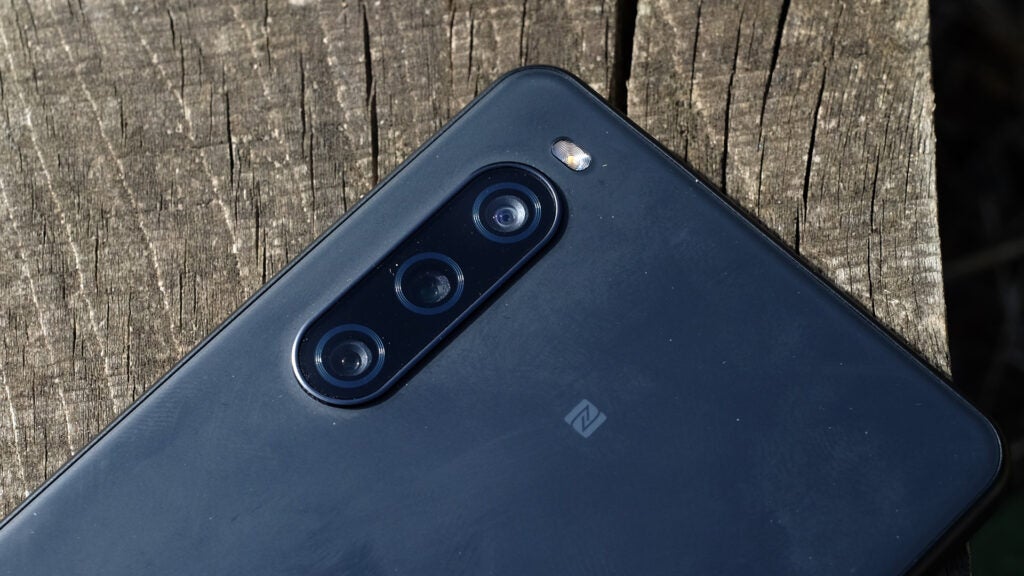
First impressions are not great. The Sony Xperia 10 IV is slow to capture photos, with lag both before and after the camera snaps a shot. The preview image in the camera app isn’t super-clear either, an effect naturally exacerbated by bright sunlight.
Actual results are quite inconsistent and, in an unusual turn, it’s the primary camera that causes issues most regularly. The ultra-wide is a bit more robust and the 2x zoom is remarkably solid considering the relatively humble hardware it has.
The most common issues centre around exposure, poor lifting of shadows and somewhat dodgy colour reproduction that, most likely, is fuelled by these exposure problems. My take is that the Auto HDR feature Sony Xperia 10 IV does not work very well with the main camera. At times this can make images look flat-out weird.
It’s bizarre that you can take a shot with this primary camera, and then switch to the lower-spec ultra-wide, and yet it is the ultra-wide that delivers less blown-out areas and better mid-tones and visible shadow detail.
When not being challenged by extremes that require clever use of HDR, the lead 12MP camera can capture very pleasant pictures. However, I often found that its colours look “dead” and the lax approach to bringing out shadow detail means even the better images can require post-shoot tweaks to look their best.
One of the phones I took out to shoot with the Sony Xperia 10 IV was the Motorola Moto G82, and while that phone is far from perfect its camera has a much higher hit rate than the Sony’s. Here’s a comparison:
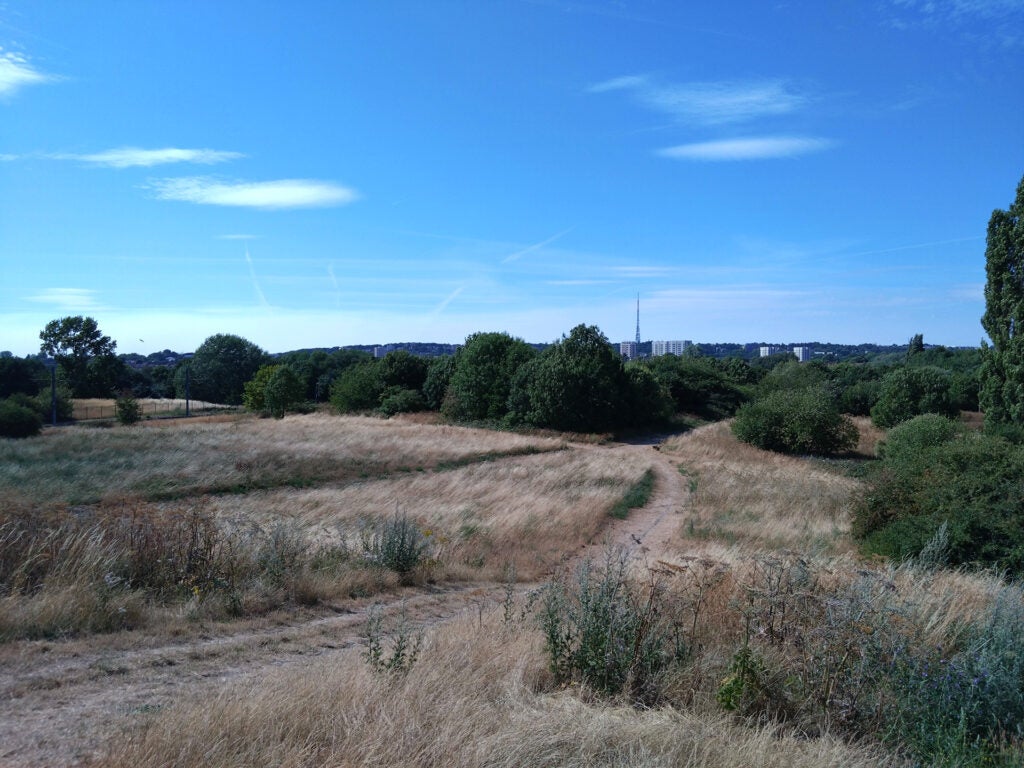
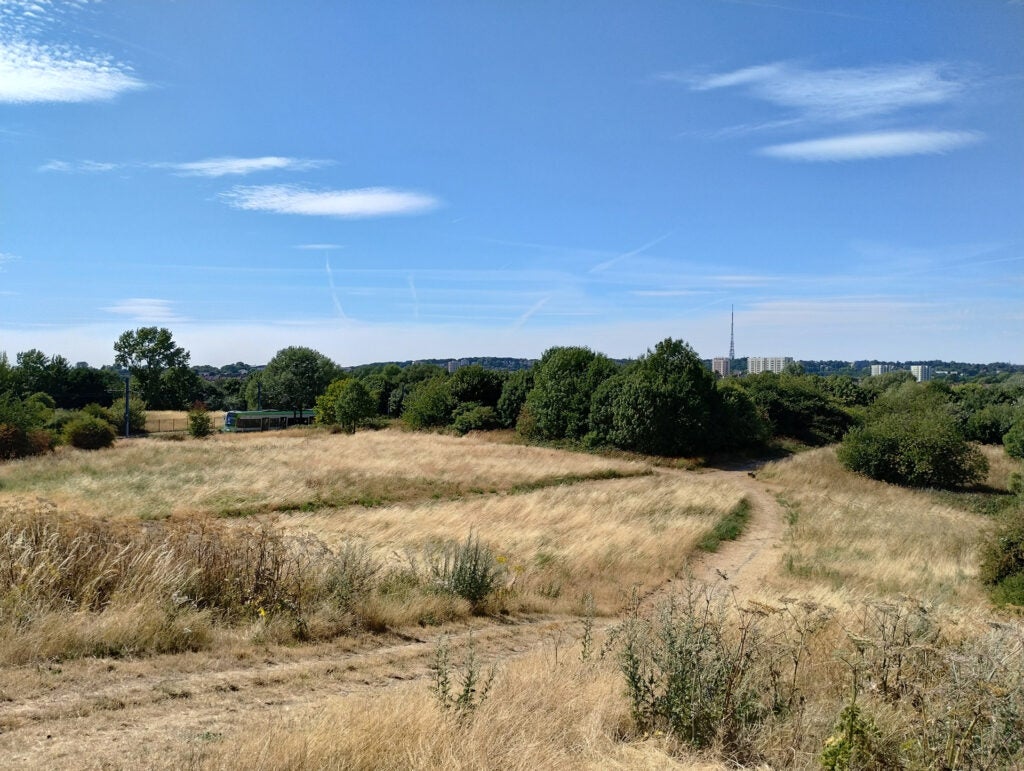
The ultra-wide camera is typical of models at this level, with much worse detail and an overall softer look than the primary. My Sony Xperia 10 IV’s ultra-wide also has poor sharpness in the right 15% of the frame, suggesting one of the lens elements may be slightly misaligned. A blurry look towards the corners of the frame is totally normal in a budget ultra-wide, but the way the right suffers more than the left side suggests something strange is going on here.
My favourite of all three cameras is probably the Sony Xperia 10 IV’s 2x zoom. It offers a real detail improvement over a crop of the 1x camera’s pics, and often produces warmer-looking, more colourful images than the primary too.
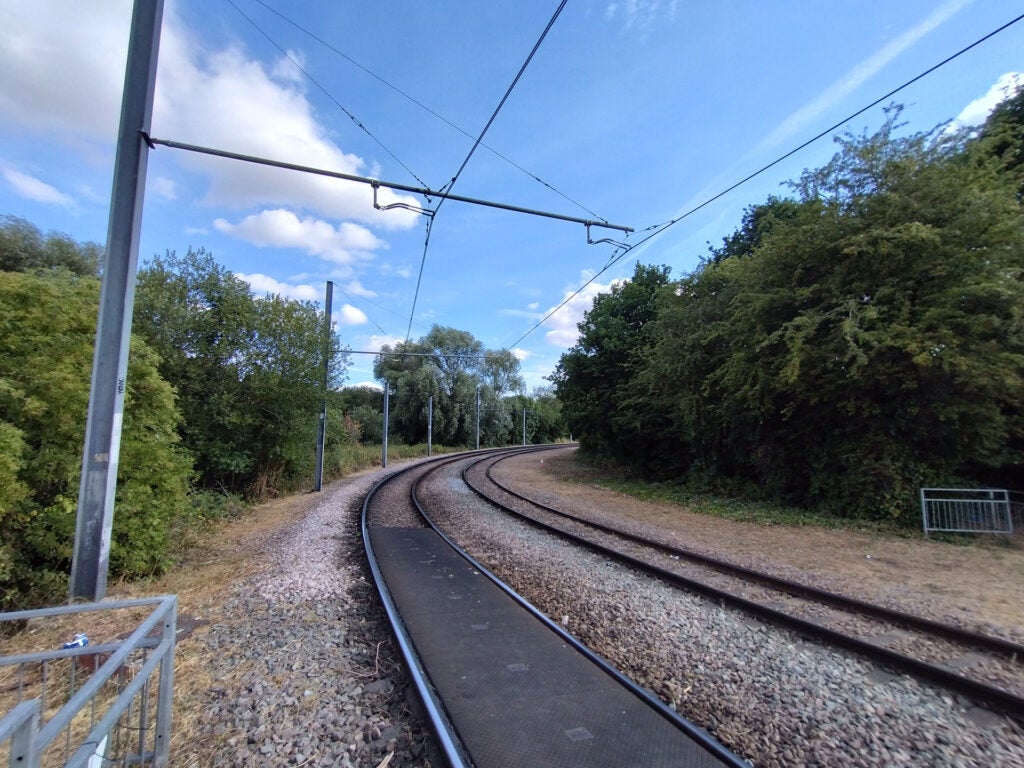
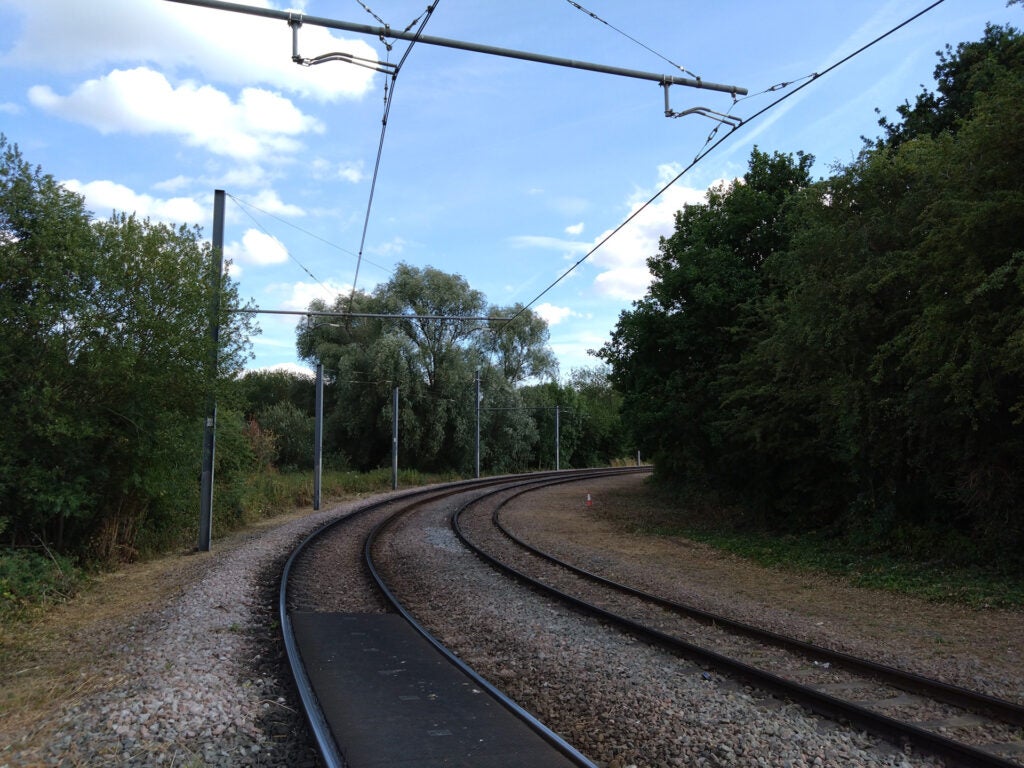
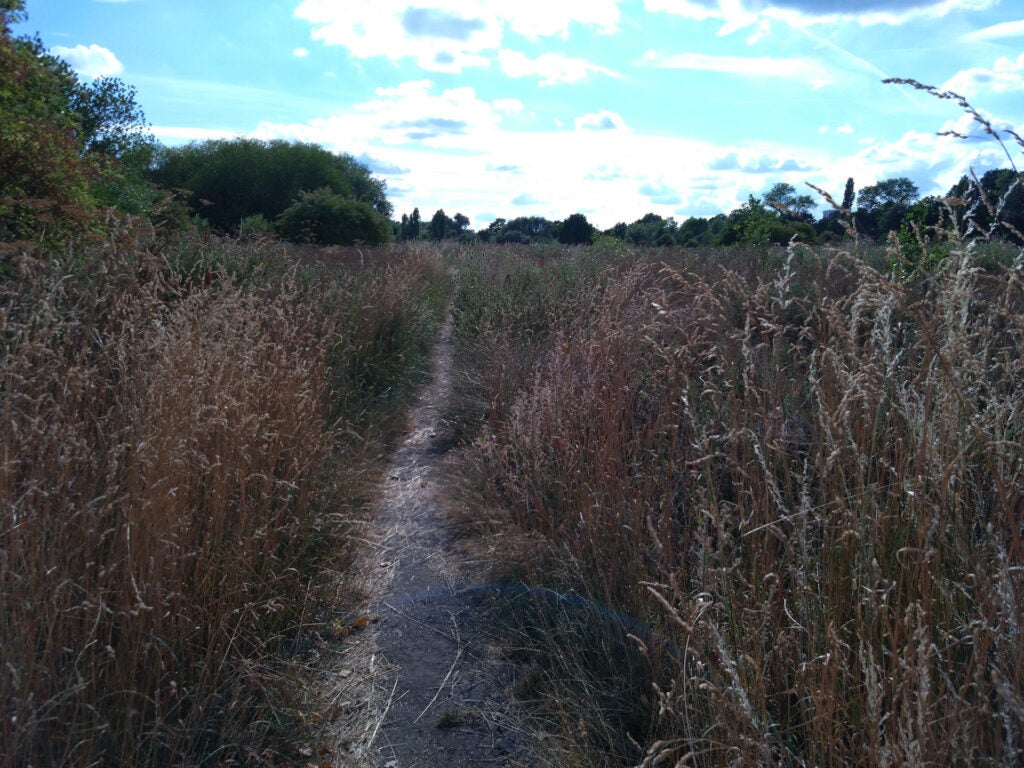


The Sony Xperia 10 IV’s night images are poor by current standards, with very limited insight in truly dark scenes even if you use the Night mode. Phones like the Pixel 6a and OnePlus Nord 2T run circles around the Sony in darkness.
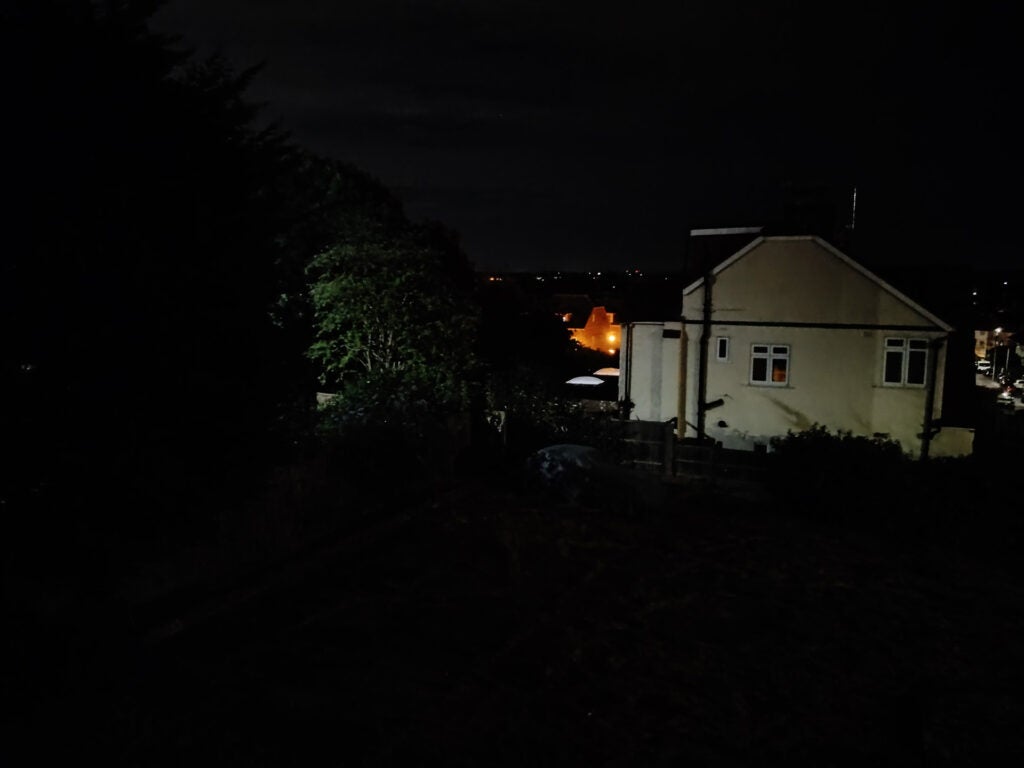
Video is fairly limited too. 1080p is the maximum resolution, and I recommend sticking to the 30fps mode. 60fps footage looks ugly and pixellated, and loses electronic stabilisation.
The 30fps mode produces OK results, and the ability to switch to the 2x camera and ultra-wide is neat. However, jittery focusing may spoil things if you’re looking to produce slick-looking results.
The Sony Xperia 10 IV’s camera is a bit of a shambles, which is a shame when the 2x camera offers something genuinely different and useful.
Battery life
- Excellent battery life
- Does not include charge adapter
- Poor charging speed
No-one is going to complain about the Sony Xperia 10 IV’s battery life. It’s among the longest-lasting phones I’ve used in the last year or so, making up for a lot of the other issues I’ve mentioned in this review so far.
If you’re the kind of person I would actually recommend the handset to, someone who doesn’t want to play intensive games much or stream a lot of video, the Sony Xperia 10 IV could well last the better part of two days between charges. On a couple of days I had almost dead on 50% chage left by bed time.
It is great to see this sort of stamina in a phone that is so narrow and light. The Sony Xperia 10 IV is easily going to outlast a Pixel 6a or OnePlus Nord 2T — two phones that beat the Sony for camera image quality and performance.
Even this strongest area of the Sony Xperia 10 IV doesn’t get away without problems, though. You don’t get a charger in the box, and after plugging into a high-power USB-PD adapter the charging rate was slow.
While it supports charging speeds up to 20W, for a significant part of the charge it draws 10W or less. You’re looking at around 2.5 hours for a charge, and the charge rate heads down to virtually nil while the screen is lit when the battery heads above 50%. Miserable stuff.
Latest deals
Should you buy it?
The Sony Xperia 10 IV is a small phone that lasts an unusually long time off a charge, a dream combo for some folks.
Below average camera image quality, a weaker processor than similarly-priced alternatives and slow charging make the Sony Xpreia 10 IV seem behind the times in important respects.
Final Thoughts
The Sony Xperia 10 IV is a petite Android phone that provides excellent battery life. It easily outlasts most of its peers, particularly the smaller ones.
However, there are big issues elsewhere. Its processor is not particularly powerful, which has a knock on effect in day-to-day performance and gaming. The camera array is a bit of a mess, with processing that veers all over the shop and a slow feel to shooting.
Some people will also be non-plussed by Sony’s use of a 60Hz screen. These three issues combine to make the Xperia 10 IV tough to recommend to most, even if its combo of long battery life, small size and IP68 water resistance is kinda great.
How we test
We test every mobile phone we review thoroughly. We use industry standard tests to compare features properly and we use the phone as our main device over the review period. We’ll always tell you what we find and we never, ever, accept money to review a product.
Used as our main handset during test period
Camera tested in variety of situations with all modes
Tested with synthetic benchmarks and real world use
FAQs
It has IP65/68 water resistance, able to handle submersion in water.
A classic 3.5mm headphone jack sits on the top of the phone.
A microSD card sits in the SIM tray, letting you add to the internal storage.
Trusted Reviews test data
Full specs
Sustainability
TrustedReviews’ holds the fact that global warming is not a myth as a core value and will continuously endeavor to help protect our planet from harm in its business practices.
As part of this mission, whenever we review a product we send the company a series of questions to help us gauge and make transparent the impact the device has on the environment.
We currently haven’t received answers to the questions on this product, but will update this page the moment we do. You can see a detailed breakdown of the questions we ask and why in our sustainability info page.

